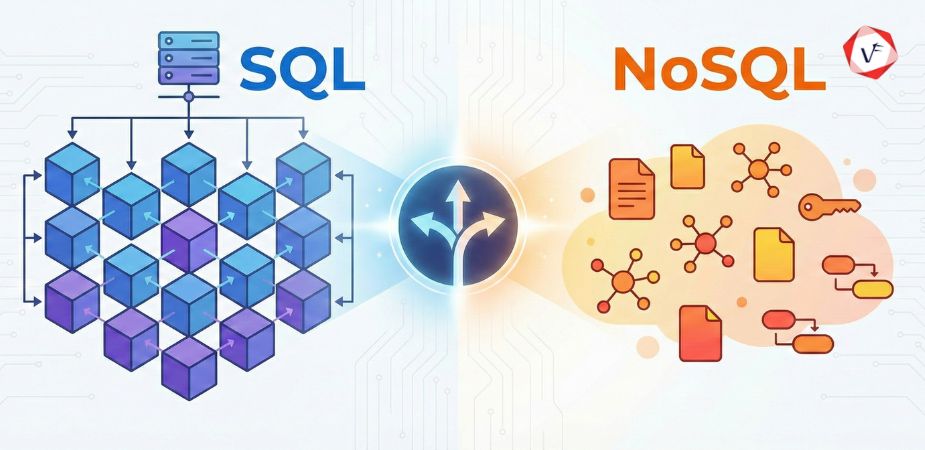- June 09, 2025 2:21 pm
- by Kevin
- June 09, 2025 2:21 pm
- by Manek

When it comes to web development, Ruby and Ruby on Rails are two terms that are often used interchangeably, though they are fundamentally different. Ruby is a dynamic, object-oriented programming language, whereas Ruby on Rails (RoR) is a server-side web application framework built using Ruby. In this article, we will go deep into the differences between Ruby and Ruby on Rails, exploring their individual features, advantages, applications, and how they compare in terms of performance, flexibility, and usability.
Overview of Ruby
Ruby is a general-purpose, high-level programming language designed for simplicity and productivity. It was created with an emphasis on developer happiness and ease of use. Ruby combines the best features of various programming languages, including Perl, Smalltalk, Eiffel, and Lisp, to create an intuitive and readable syntax.
Key Features of Ruby
Common Use Cases for Ruby While Ruby is best known for powering Ruby on Rails, it is also used for:
Overview of Ruby on Rails
Ruby on Rails(RoR) is a web application framework built on Ruby. Rails is designed to simplify the development of web applications by following the Model-View-Controller (MVC) architectural pattern. It provides a robust set of tools, conventions, and libraries that enable rapid web development.
Key Features of Ruby on Rails
Common Use Cases for Ruby on Rails
<ul class="blog-detail-list mb-4"></ul> <ul class="blog-detail-list mb-4"></ul> <ul class="blog-detail-list mb-4"></ul>Choose Ruby If:
Choose Ruby on Rails If:
Performance of Ruby
Performance is one of the primary concerns when comparing Ruby vs. Ruby on Rails. Since Ruby is an interpreted language, it is naturally slower than compiled languages like C++ or Java. However, Ruby's elegant and human-readable syntax makes it highly developer-friendly, often outweighing its execution speed concerns in many projects.
Ruby provides garbage collection and dynamic typing, both of which enhance developer productivity but come at the cost of execution speed. When used outside of web applications, such as in scripting or data manipulation, Ruby’s speed is generally not a significant bottleneck.
Performance of Ruby on Rails
Since Ruby on Rails is built on Ruby, it inherits the language’s performance characteristics. However, Rails applications can often feel slower compared to applications built using frameworks like Django (Python), Express.js (Node.js), or Spring Boot (Java).
To improve performance, Ruby on Rails developers rely on:
Despite these optimizations, for highly scalable applications requiring extreme performance, Ruby on Rails might not be the best choice compared to other frameworks. However, for rapid development and maintainability, Rails still remains one of the best web frameworks available.
Security Features in Ruby As a general-purpose language, Ruby does not come with built-in security mechanisms specifically for web applications. However, secure coding practices can be followed to minimize vulnerabilities when using Ruby for scripting or automation tasks.
Security Features in Ruby on Rails Ruby on Rails takes security very seriously and provides multiple built-in security mechanisms, including:
These security features make Ruby on Rails a safe and reliable choice for web development, especially for applications handling sensitive user data.
Ruby Community Ruby has a passionate and active developer community. Since its introduction in the mid-1990s, Ruby has gained widespread popularity and has a large ecosystem of gems (libraries) that extend its functionality. The official Ruby Gem repository contains thousands of reusable libraries for automation, scripting, web development, and more.
Popular Ruby gems include:
Ruby on Rails Community The Rails community is even larger and more active than Ruby’s community alone. Because Rails is a mature web framework, it has an abundance of guides, tutorials, and documentation available for developers.
Key benefits of the Rails ecosystem: ✔ Thousands of open-source Rails gems for authentication, API handling, payments, etc. ✔ Frequent updates with security patches and performance improvements. ✔ Large community support, including Stack Overflow, GitHub, and Rails-specific forums. If you're looking for rapid web application development, Ruby on Rails remains a top choice, thanks to its well-established ecosystem and strong community backing.
Companies Using Ruby Since Ruby is a general-purpose language, its use cases vary from automation to software development. Some companies use Ruby for data processing, security scripting, and system automation.
Companies Using Ruby on Rails Many startups and enterprises rely on Ruby on Rails because of its developer-friendly environment and rapid development speed. Some famous companies built using Ruby on Rails include:
These examples show that Ruby on Rails is powerful enough for enterprise applications and widely adopted by startups and large-scale businesses alike.
Understanding the differences between Ruby and Ruby on Rails is crucial for making the right technology choice. While Ruby is a powerful and flexible programming language, Ruby on Rails is a structured web development framework designed for building scalable web applications.
If you are looking for a highly efficient, scalable, and professional web development service, Vofox’s web development services offer top-tier expertise in Ruby on Rails. Whether you need a custom web application, API development, or an enterprise-level solution, Vofox can help you achieve your business goals.
Guaranteed Response within One Business Day!

What is Digital Twin Technology?

What are WebAssembly (WASM) Applications?
Code Review Best Practices: Complete Guide for 2026

Database Selection Guide: SQL vs NoSQL
AI Agents in Enterprise Software: How Autonomous AI is Transforming Business Operations